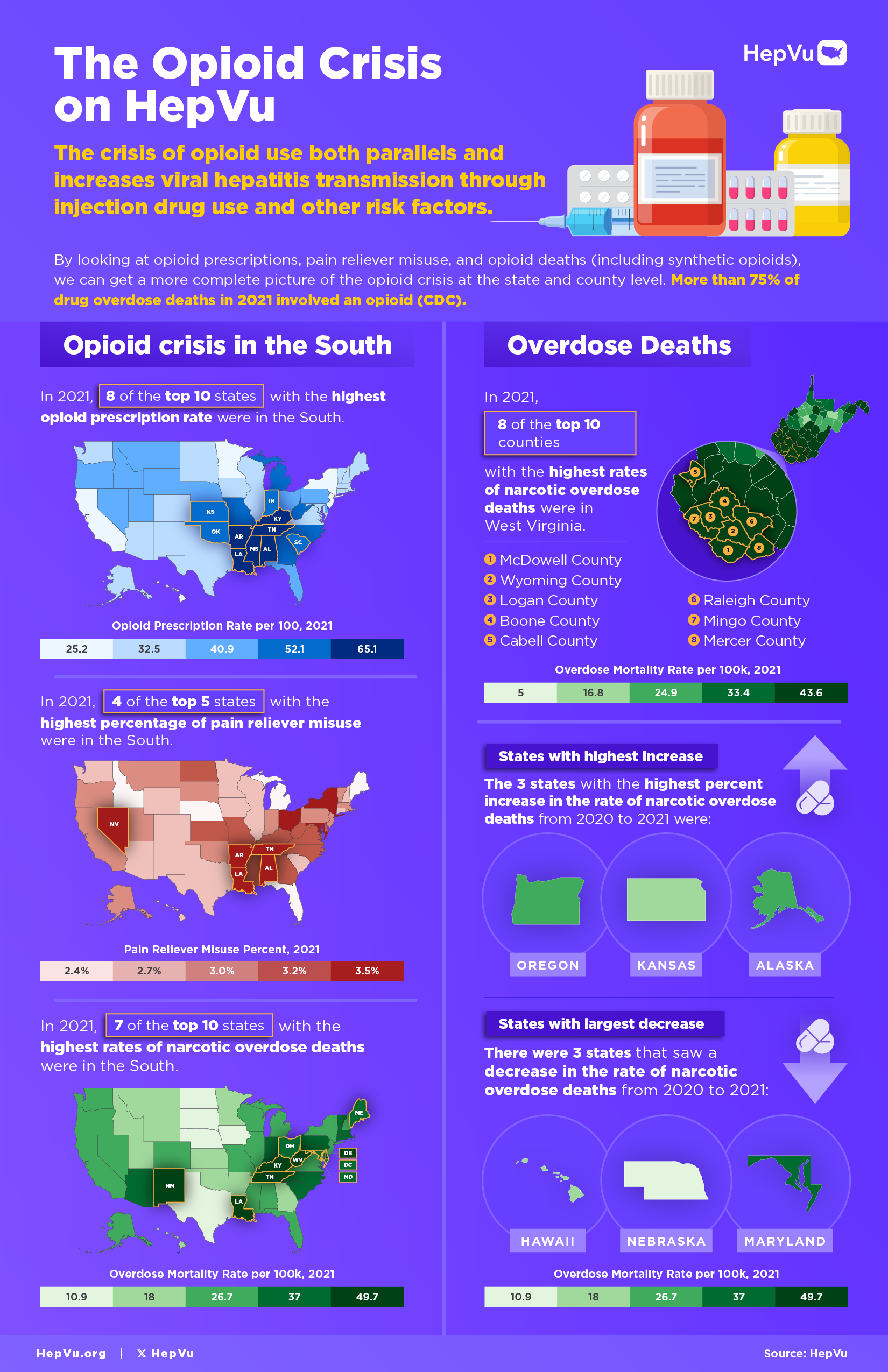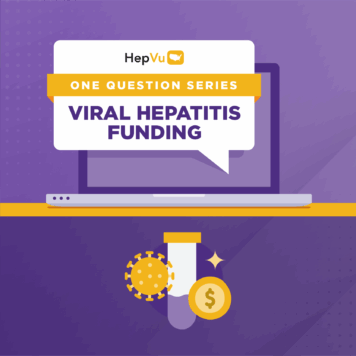HepVu’s new 2021 opioid and Hepatitis C mortality data and maps help visualize the relationship between the opioid and viral hepatitis epidemics and illustrate how geographic differences can impact health outcomes.
Washington, DC – Today, HepVu — a leading organization that visualizes viral hepatitis data and makes it widely available — released 2021 opioid prescription, overdose mortality, and pain-reliever misuse maps, as well as 2021 Hepatitis C mortality state maps and 2020 Hepatitis C mortality county maps, containing data only available on HepVu.
According to the Centers for Disease Control (CDC), the number of deaths due to opioid use disorder has increased sharply since 2015. Relatedly, new viral hepatitis infections are also on the rise due to injection drug use. HepVu maps opioid indicators alongside hepatitis C data to help researchers, policymakers, and the public better understand these overlapping epidemics.
“Understanding the opioid epidemic is critical to understanding and eliminating viral hepatitis in this country. Public health decision-makers need reliable and consistent data to help them determine where they are making progress and where there are gaps that require additional attention, services, and resources,” said Patrick Sullivan, DVM, PhD, Professor of Epidemiology at Emory University’s Rollins School of Public Health, and Principal Scientist for AIDSVu. “AIDSVu and HepVu’s joint mission is to make data widely available, easily accessible, and locally relevant to increase awareness and inform public health decision making. Our updated interface makes these data even more widely available and easily accessible.”
Updated HepVu Data on Opioids and Hepatitis C Mortality
In recent years, there have been shifts in the epidemiological nature of the Hepatitis C epidemic, including the advancement in treatment options and changes in public health strategies toward elimination, all of which impact Hepatitis C-related mortality at the national and local levels. Although these results do not replace the need for a comprehensive and cohesive viral hepatitis surveillance system, HepVu’s granular data on opioid prescription rates and use,as well as Hepatitis C-related mortality, provide important metrics for understanding the evolution of the Hepatitis C epidemic and its connection to the opioid crisis.

Key findings include:
- In 2021, 8 of the top 10 states with the highest opioid prescription rate were in the South
- In 2021, 4 of the top 5 states with the highest percentage of pain reliever misuse were in the South.
- In 2021, 7 of the top 10 states with the highest rates of narcotic overdose deaths were in the South.
- In 2021, 8 of the top 10 counties with the highest rates of narcotic overdose deaths were in West Virginia.
- The 3 states with the highest percent increase in the rate of narcotic overdose deaths from 2020 to 2021 were Alaska, Oregon, and Kansas.
- There were 3 states that saw a decrease in the rate of narcotic overdose deaths from 2020 to 2021: Hawaii, Maryland, and Nebraska .
- In 2021, all top 10 states with the highest rates of Hepatitis C mortality are either in the South or West.
- In 2020, all top 10 counties with the highest rates Hepatitis C Mortality were in the South.
Today, HepVu has also released an enhanced map interface to provide users with a streamlined user experience and to better visualize public health data. HepVu’s interactive maps visualizing U.S. county-level Hepatitis C-related mortality have been updated to 2020, illustrating how factors such as age and geographic region affect health outcomes. County-level map updates also include2021 opioid prescription rates per 100 people and 2021 overdose mortality rates. These maps have also been updated at the state level, with the addition of 2021 Hepatitis C mortality and 2021 pain reliever misuse percentages
HepVu’s sister site, AIDSVu, has also updated its HIV map interface.
New features include:
- Guided tutorial for new and returning users
- Modernized navigation to ensure users can find the exact maps they need
- Updated maps with consistent cutpoints
- Streamlined export tool for easy downloading and sharing of specific map views
- New “compare mode” tool that allows users to compare any two maps
About HepVu Data
HepVu is presented by Emory University’s Rollins School of Public Health in partnership with Gilead Sciences, Inc., and the Center for AIDS Research at Emory University (CFAR). HepVu continues to advance its mission to make viral hepatitis data widely available, easily accessible, and locally relevant to inform public health decision-making. The site aims to provide researchers, policymakers, and community members with a more comprehensive understanding of viral hepatitis at the local, state, and national level.
To learn more about HepVu’s data and sources, see our FAQ and Data Methods.



